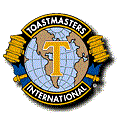
Addison Singles Toastmasters |
|
District 50, Area 63, Club
9872
|

 |
|  |
|
How to Use Mind Mapping to Prepare Powerful Speeches
From the time we enter elementary school, we're taught to organize our thoughts in a "linear" fashion - line by line, left to right, top to bottom on the page. You may have even learned how to prepare speeches that way - either writing them out word for word or writing outlines with the main points, then sub-points, then sub-sub- points, and so on. But that's not how our mind works. When preparing a speech, we don't think in terms of points and sub-points. We have snatches of ideas ... a quotation here ... a statistic there ... an interesting article we read recently ... a funny anecdote ... a bar of music running through your head ... the start of an idea for a powerful conclusion ... Mind Mapping is simply a technique for translating these mental ideas to paper. It will help you to:
The basic idea is that instead of writing out your speech in words, you draw it in pictures. So a Mind Map is a picture of your speech. Here's a quick overview of how to create a Mind Map:
You can see an example of one of my Mind Maps below. Don't worry too much about what it's trying to say or what the symbols mean - just look at it as an example. I created this for a 45-minute presentation about the Internet. As you can see, this isn't rocket science, and you don't need to be an artist!
As you gain more experience with Mind Mapping, you'll start developing your own internal shorthand for certain things. That's fine - if it works for you, that's all that matters! For example, here are a few of the symbols that I use (Use them if you wish, but it's even better if you can make up your own!):
There are no fixed "rules" for Mind Mapping, but you might find these guidelines useful:
Don't get too bogged down with your Mind Maps. They don't need to make sense to anybody else - they are for you to organize your thoughts. When you present your speech, take the Mind Map with you and use it in place of notes. Or try your speech without any notes at all - you'll discover that it's much easier to visualize a Mind Map than to memorize written notes. Mind Mapping has more applications than just writing speeches. I use Mind Mapping for planning each week, summarizing books that I read, taking notes at seminars, and even for writing this article. It's a simple, powerful tool. Try it - it works.
|
|
Home Visitors' FAQ Meetings Membership Social Events Club Info Resources
Addison Singles Toastmasters ~ 972-390-0693 ~ addison-toastmasters@mailcity.com |
|
Site design by Sandi
Smith. Copyright 2002-2003 Addison Singles Toastmasters. The names
"Toastmasters International," "Toastmasters" and the Toastmasters International
emblem are trademarks protected in the United States, Canada and other
countries where Toastmasters Clubs exist. Unauthorized use is strictly
prohibited.
|